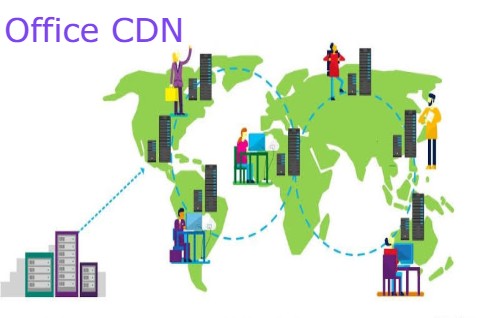Office Content Delivery Network: Is it Applicable to You?

CDNs or Content Delivery Networks help keep Office 365 fast and reliable for end users. Cloud services like Office 365 use CDNs to cache static assets closer to the browsers requesting them to speed up downloads and reduce perceived end user latency. The information in this topic will help you learn about Content Delivery Networks (CDNs) and how they are used by Office 365.
A CDN is a geographically distributed network consisting of proxy and file servers in datacenters connected by high-speed backbone networks. CDNs are used to reduce latency and load times for a specified set of files and objects in a web site or service. A CDN may have many thousands of endpoints for optimal servicing of incoming requests from any location.
CDNs are used by most enterprise cloud services. Cloud services like Office 365 have millions of customers downloading a mix of proprietary content (such as emails) and generic content (such as icons) at one time. It's more efficient to put images everyone uses, like icons, as close to the user's computer as possible. It isn't practical for every cloud service to build CDN datacenters that store this generic content in every metropolitan area, or even in every major Internet hub around the world, so some of these CDNs are shared.
What can Office CDN offer to your business?
The built-in Office Content Delivery Network (CDN) allows Office 365 administrators to provide better performance for their organization's SharePoint Online pages by caching static assets closer to the browsers requesting them, which helps to speed up downloads and reduce latency. The Office CDN uses the http/2 protocol for improved compression and download speeds.
The Office CDN is composed of multiple CDNs that allow you to host static assets in multiple locations, or origins, and serve them from global high-speed networks. Depending on the kind of content you want to host in the Office 365 CDN, you can add public origins, private origins or both.
Content in public origins within the Office 365 CDN is accessible anonymously, and can be accessed by anyone who has URLs to hosted assets. Because access to content in public origins is anonymous, you should only use them to cache non-sensitive generic content such as JavaScript files, scripts, icons and images. The Office CDN is used by default for downloading generic resource assets like the Office 365 client applications from a public origin.
Private origins within the Office 365 CDN provide private access to user content such as SharePoint Online document libraries, sites and proprietary images. Access to content in private origins is secured with dynamically generated tokens so it can only be accessed by users with permissions to the original document library or storage location. Private origins in the Office 365 CDN can only be used for SharePoint Online content, and you can only access assets through redirection from your SharePoint Online tenant
How are Contents Managed Using an Office CDN?
The basic data retrieval process is as follows:
Your client (a browser or Office client application) requests data from Office 365. Office 365 either returns the data directly to your client or, if the data is part of a set of content hosted by the CDN, redirects your client to the CDN URL. If the data is already cached in a public origin, your client downloads the data directly from the nearest CDN location to your client; If the data is already cached in a private origin, the CDN service checks your Office 365 user account's permissions on the origin.
If you have permissions, SharePoint Online dynamically generates a custom URL composed of the path to the asset in the CDN and two access tokens, and returns the custom URL to your client. Your client then downloads the data directly from the nearest CDN location to your client using the custom URL, and if the data isn't cached at the CDN, the CDN node requests the data from Office 365 and then caches the data for a period of time after your client downloads the data.
The CDN figures out the closest data center to the user's browser using redirection and downloads the requested data from there. CDN redirection is quick, and can save users a lot of download time.
Is Office CDN better than Beluga CDN?
With Beluga CDN, which makes use of an IPV6 Network, you may be able to deliver 20-40% faster with its dual stack network. It can also provide real-time traffic statistics up-to-the-second so it is better than Github CDN in terms of updates. You can also easily delete specific content from any location in just a click. It is also user-friendly especially to developers who will most likely use this content delivery network. It has advanced settings, fine control, and automation via a restful API. Beluga CDN also has a myriad of tools to help secure and protect your content.
It also works like the Amazon CloudFront or Stackpath but only costs a quarter of their prices which allows you to accelerate the delivery of your siteâs content by using the power of a global cloud.
Power-up your Content Delivery
30 Day Free Trial Cancel Anytime